Linux-based MIDs, UMPCs, and Tablets
Oct 5, 2000 — by Eric Brown — from the LinuxDevices Archive — 436 viewsThis guide provides summaries and links of LinuxDevices stories about Linux-based mobile Internet devices (MIDs), ultra-mobile PCs (UMPCs), and tablets. Note that in many cases there is a fine line between these devices and smaller handhelds, which may be found in our Linux PDAs, PMPs, PNDs, and other Handhelds showcase.
 DLI 8800 — Dec. 8, 2009 — This Ubuntu Linux-ready tablet PC from Data Ltd Incorporated (DLI) is designed to enable retailers to accept payments anywhere in a store. The DLI 8800 includes a 7-inch touchscreen display and magstripe reader, survives four-foot drops, and is available with a barcode scanner and RFID reader.
DLI 8800 — Dec. 8, 2009 — This Ubuntu Linux-ready tablet PC from Data Ltd Incorporated (DLI) is designed to enable retailers to accept payments anywhere in a store. The DLI 8800 includes a 7-inch touchscreen display and magstripe reader, survives four-foot drops, and is available with a barcode scanner and RFID reader.
 PsiXpda — Dec. 4, 2009 — PsiXpda's Psion-like UMPC (ultra-mobile PC) offers a five-inch touchscreen display, an Intel Atom Z510, and a 16GB SSD (solid state disk). The “PsiXpda” includes WiFi, Bluetooth, and optional 3G, weighs under a pound, and supports Android.
PsiXpda — Dec. 4, 2009 — PsiXpda's Psion-like UMPC (ultra-mobile PC) offers a five-inch touchscreen display, an Intel Atom Z510, and a 16GB SSD (solid state disk). The “PsiXpda” includes WiFi, Bluetooth, and optional 3G, weighs under a pound, and supports Android.
 Inbric M1 MID and Dual — Nov. 25, 2009 — Inbrics' M1 MID (pictured) and “Dual” clamshell both run Android, and are designed for a Korean audience. The M1 MID is built on an ARM Cortex-A8 processor clocked at 800MHz, and the 5.1 x 2.4 x 0.6-inch Dual clamshell offers an ARM Cortex-based processor, a dual-touchscreen design that features 360-degree flexibility, a three-megapixel camera, WiFi, Bluetooth, WiBro, and T-DMB mobile TV.
Inbric M1 MID and Dual — Nov. 25, 2009 — Inbrics' M1 MID (pictured) and “Dual” clamshell both run Android, and are designed for a Korean audience. The M1 MID is built on an ARM Cortex-A8 processor clocked at 800MHz, and the 5.1 x 2.4 x 0.6-inch Dual clamshell offers an ARM Cortex-based processor, a dual-touchscreen design that features 360-degree flexibility, a three-megapixel camera, WiFi, Bluetooth, WiBro, and T-DMB mobile TV.
 Intel Reader — Nov. 10, 2009 — This Linux-based optical character recognition and text-to-speech device from Intel is designed as an e-book reader for visually impaired or dyslexic users. The Atom-based Intel Reader is equipped with a five-megapixel camera for snapping photographs of text, which it then simultaneously displays and reads aloud.
Intel Reader — Nov. 10, 2009 — This Linux-based optical character recognition and text-to-speech device from Intel is designed as an e-book reader for visually impaired or dyslexic users. The Atom-based Intel Reader is equipped with a five-megapixel camera for snapping photographs of text, which it then simultaneously displays and reads aloud.
 Soyea Z5 — Nov. 2, 2009 — This mobile Internet device (MID) from Chinese manufacturer Soyea incorporates Intel's dual-speed, MID-oriented Z515 Atom CPU. Soyea's Z5 is equipped with 1GB RAM, an 8GB SSD, a five-inch touchscreen, plus 3G, WiFi, Bluetooth, and a three-megapixel webcam.
Soyea Z5 — Nov. 2, 2009 — This mobile Internet device (MID) from Chinese manufacturer Soyea incorporates Intel's dual-speed, MID-oriented Z515 Atom CPU. Soyea's Z5 is equipped with 1GB RAM, an 8GB SSD, a five-inch touchscreen, plus 3G, WiFi, Bluetooth, and a three-megapixel webcam.
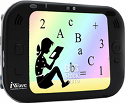 iWave iW-Rainbow-G6 — Oct. 26, 2009 — Built by iWave Systems of Bangalore, India, this Linux-compatible, Intel Atom-based reference design for UMPCs (ultra mobile PCs) or in-car computers is equipped with a 7-inch touchscreen. The iW-Rainbow-G6 provides room for a 1.8-inch hard disk drive or SSD, and is available with optional cellular and GPS modules.
iWave iW-Rainbow-G6 — Oct. 26, 2009 — Built by iWave Systems of Bangalore, India, this Linux-compatible, Intel Atom-based reference design for UMPCs (ultra mobile PCs) or in-car computers is equipped with a 7-inch touchscreen. The iW-Rainbow-G6 provides room for a 1.8-inch hard disk drive or SSD, and is available with optional cellular and GPS modules.
 Entourage Edge — Oct. 22, 2009 — Entourage Systems' e-reader runs Android on dual displays and folds open like a book. The Entourage Edge offers one inside panel devoted to a monochrome, 9.7-inch E Ink EPD display, with the other panel holding a 10.1-inch color touchscreen that provides WiFi (or optional 3G) web browsing and media playback.
Entourage Edge — Oct. 22, 2009 — Entourage Systems' e-reader runs Android on dual displays and folds open like a book. The Entourage Edge offers one inside panel devoted to a monochrome, 9.7-inch E Ink EPD display, with the other panel holding a 10.1-inch color touchscreen that provides WiFi (or optional 3G) web browsing and media playback.
 Barnes & Noble Nook — Oct. 20, 2009 — Barnes & Noble's e-book reading device is billed as being the first Android-based e-reader. The “Nook” offers the usual six-inch E Ink display, but also supplies a 3.5-inch color subdisplay for an Android interface, plus 2GB storage, a microSD slot, WiFi, and 3G.
Barnes & Noble Nook — Oct. 20, 2009 — Barnes & Noble's e-book reading device is billed as being the first Android-based e-reader. The “Nook” offers the usual six-inch E Ink display, but also supplies a 3.5-inch color subdisplay for an Android interface, plus 2GB storage, a microSD slot, WiFi, and 3G.
 Spring Design Alex — Oct. 20, 2009 — Spring Design's Android-based e-book reader boasts two displays and full browser capabilities. The WiFi- and 3G-enabled “Alex” offers both the typical 6-inch monochrome EPD (electronic paper display) display for reading, plus a linked, 3.5-inch color display for Android content and multimedia.
Spring Design Alex — Oct. 20, 2009 — Spring Design's Android-based e-book reader boasts two displays and full browser capabilities. The WiFi- and 3G-enabled “Alex” offers both the typical 6-inch monochrome EPD (electronic paper display) display for reading, plus a linked, 3.5-inch color display for Android content and multimedia.
 AdelaVoice Lighthouse SQ7 — Oct. 1, 2009 — This voice-enabled MID from AdelaVoice is based on SmartDevices' ARM11-based SmartQ7 reference design, and is tuned to social networking sites. The Lighthouse SQ7 offers a seven-inch, 800 x 480 touchscreen, 128MB of RAM, 1GB of flash, WiFi, and an Ubuntu Linux-based interface with voice-enabled Facebook and Twitter updates.
AdelaVoice Lighthouse SQ7 — Oct. 1, 2009 — This voice-enabled MID from AdelaVoice is based on SmartDevices' ARM11-based SmartQ7 reference design, and is tuned to social networking sites. The Lighthouse SQ7 offers a seven-inch, 800 x 480 touchscreen, 128MB of RAM, 1GB of flash, WiFi, and an Ubuntu Linux-based interface with voice-enabled Facebook and Twitter updates.
 Irex DR800SG — Sep. 28. 2009 — Irex Technologies's Linux-based electronic book (e-book) reader boasts an 8.1-inch, 1024 x 768 display. Incorporating Freescale's ARM11-based i.MX31, the Irex DR800SG communicates via the Verizon Wireless 3G network, supports the open ePub publishing standard, and offers built-in support for the Barnes & Noble eBookstore.
Irex DR800SG — Sep. 28. 2009 — Irex Technologies's Linux-based electronic book (e-book) reader boasts an 8.1-inch, 1024 x 768 display. Incorporating Freescale's ARM11-based i.MX31, the Irex DR800SG communicates via the Verizon Wireless 3G network, supports the open ePub publishing standard, and offers built-in support for the Barnes & Noble eBookstore.
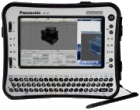 EmperorLinux Ant Rugged Linux (Panasonic Toughbook CF-U1) — Sep. 25, 2009 — This compact, 2.3-pound tablet PC was previously available with Windows from Panasonic as the Toughbook CF-U1, but EmperorLinux has now refitted it with Linux. Offering MIL-spec certification for vibration, drop, and moisture resistance, the Ant Rugged Linux is equipped with a 1.33Ghz Intel Atom, a 16GB to 32GB solid-state drive (SSD), a 5.6-inch WSVGA touchscreen, 802.11n WiFi, and Bluetooth, and provides handwriting recognition technology.
EmperorLinux Ant Rugged Linux (Panasonic Toughbook CF-U1) — Sep. 25, 2009 — This compact, 2.3-pound tablet PC was previously available with Windows from Panasonic as the Toughbook CF-U1, but EmperorLinux has now refitted it with Linux. Offering MIL-spec certification for vibration, drop, and moisture resistance, the Ant Rugged Linux is equipped with a 1.33Ghz Intel Atom, a 16GB to 32GB solid-state drive (SSD), a 5.6-inch WSVGA touchscreen, 802.11n WiFi, and Bluetooth, and provides handwriting recognition technology.
 NorhTec Gecko Info Pad — Sep. 22, 2009 — NorhTec's tablet computer costs only $300, runs Ubuntu Linux on a 1GHz SoC, and operates via eight AA batteries. The “Gecko Info Pad” includes an 8.9-inch, 1024 x 600 touchscreen display and 8GB of solid state storage, and needs no external power brick.
NorhTec Gecko Info Pad — Sep. 22, 2009 — NorhTec's tablet computer costs only $300, runs Ubuntu Linux on a 1GHz SoC, and operates via eight AA batteries. The “Gecko Info Pad” includes an 8.9-inch, 1024 x 600 touchscreen display and 8GB of solid state storage, and needs no external power brick.
 TabletKiosk Eo a7330D, TufTab a7230XD, and Sahara NetSlate a230T — Sep. 22, 2009 — These three portable tablet computers from TabletKiosk run OpenSUSE Linux 11 on Intel Atom processors. The Eo a7330D and the ruggedized TufTab a7230XD are both seven-inch UMPCs (ultra mobile PCs) with built-in Wacom digitizers, and the Sahara NetSlate a230T tablet is a slate computer with a 12.1-inch touchscreen that offers 1024 x 768 resolution, and supports pen input.
TabletKiosk Eo a7330D, TufTab a7230XD, and Sahara NetSlate a230T — Sep. 22, 2009 — These three portable tablet computers from TabletKiosk run OpenSUSE Linux 11 on Intel Atom processors. The Eo a7330D and the ruggedized TufTab a7230XD are both seven-inch UMPCs (ultra mobile PCs) with built-in Wacom digitizers, and the Sahara NetSlate a230T tablet is a slate computer with a 12.1-inch touchscreen that offers 1024 x 768 resolution, and supports pen input.
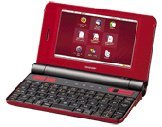 Sharp NetWalker PC-Z1 — Aug. 27, 2009 — Sharp's heir to its Zaurus line of Linux-based PDAs is an Ubuntu Linux-based palmtop with claimed three-second boot-ups and ten-hour battery life. The “NetWalker PC-Z1 Mobile Internet Tool” is equipped with an ARM Cortex-A8 based Freescale i.MX515 SoC, a five-inch WSVGA touchscreen, and a QWERTY keyboard.
Sharp NetWalker PC-Z1 — Aug. 27, 2009 — Sharp's heir to its Zaurus line of Linux-based PDAs is an Ubuntu Linux-based palmtop with claimed three-second boot-ups and ten-hour battery life. The “NetWalker PC-Z1 Mobile Internet Tool” is equipped with an ARM Cortex-A8 based Freescale i.MX515 SoC, a five-inch WSVGA touchscreen, and a QWERTY keyboard.
 SMiT MID-560 — Aug. 18, 2009 — Shenzhen State Micro Technology (SMiT)'s MID (mobile Internet device) runs Android 1.5 on an ARM11-based processor. The MID-560 has a five-inch touchscreen display with 800 x 480 resolution, a 667MHz Samsung S3C6410 processor, GPS, WiFi, and up to 8GB of flash storage.
SMiT MID-560 — Aug. 18, 2009 — Shenzhen State Micro Technology (SMiT)'s MID (mobile Internet device) runs Android 1.5 on an ARM11-based processor. The MID-560 has a five-inch touchscreen display with 800 x 480 resolution, a 667MHz Samsung S3C6410 processor, GPS, WiFi, and up to 8GB of flash storage.
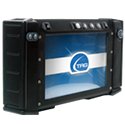 Technology Advancement Group TC-100 Commander — Aug. 14, 2009 — This ruggedized UMPC (ultra-mobile PC) from Virginia-based Technology Advancement Group (TAG) is aimed at emergency services, military, and industrial applications. The TC-100 Commander includes a seven-inch, 1024 x 600 touchscreen that comes in sunlight- or night vision-readable versions, plus WiFi, and options including GPS, Bluetooth, 3G, and a hard disk drive.
Technology Advancement Group TC-100 Commander — Aug. 14, 2009 — This ruggedized UMPC (ultra-mobile PC) from Virginia-based Technology Advancement Group (TAG) is aimed at emergency services, military, and industrial applications. The TC-100 Commander includes a seven-inch, 1024 x 600 touchscreen that comes in sunlight- or night vision-readable versions, plus WiFi, and options including GPS, Bluetooth, 3G, and a hard disk drive.
 Eston MID-02 — Aug. 13, 2009 — Eston Technology Limited lost its first-generation MID (mobile Internet device) prototype to theft, but went back and created a new one complete with Android support. The MID-02 includes a 624MHz Marvell PXA300 CPU, a 4.3-inch, 800 x 480-resolution touchscreen, WiFi, and a slide-out QWERTY keyboard.
Eston MID-02 — Aug. 13, 2009 — Eston Technology Limited lost its first-generation MID (mobile Internet device) prototype to theft, but went back and created a new one complete with Android support. The MID-02 includes a 624MHz Marvell PXA300 CPU, a 4.3-inch, 800 x 480-resolution touchscreen, WiFi, and a slide-out QWERTY keyboard.
<  Optima OP5-E — Jul. 21, 2009 — Optima's 5.6 x 2.9 x 0.7-inch MID runs the Nokia-backed Maemo Linux on an ARM/XScale 806MHz Marvell PXA320 processor. The OP5-E offers a 4.3-inch, 800 x 480 touchscreen, 3.2-megapixel camera, CDMA2000 EV-DO 3G, WiFi, Bluetooth, GPS, and an eight-hour battery.
Optima OP5-E — Jul. 21, 2009 — Optima's 5.6 x 2.9 x 0.7-inch MID runs the Nokia-backed Maemo Linux on an ARM/XScale 806MHz Marvell PXA320 processor. The OP5-E offers a 4.3-inch, 800 x 480 touchscreen, 3.2-megapixel camera, CDMA2000 EV-DO 3G, WiFi, Bluetooth, GPS, and an eight-hour battery.
 Interead Cool-er — May 29, 2009 — This Linux-based e-book reader from U.K. startup Interead is claimed to be about 40 percent lighter than an Amazon Kindle 2, and over $100 cheaper. The “Cool-er” is equipped with a 400MHz ARM9 Samsung processor and a six-inch E-Ink Vizplex display.
Interead Cool-er — May 29, 2009 — This Linux-based e-book reader from U.K. startup Interead is claimed to be about 40 percent lighter than an Amazon Kindle 2, and over $100 cheaper. The “Cool-er” is equipped with a 400MHz ARM9 Samsung processor and a six-inch E-Ink Vizplex display.
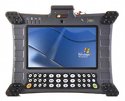 DLI 8400 — May 26, 2009 — Data Ltd's ruggedized UMPC (ultra-mobile PC) is claimed to survive multiple four-foot drops onto concrete. The Linux-compatible “DLI 8400” uses a 1.6GHz Atom processor, has hard disk or SSD (solid state disk) storage, and operates for nine hours via two hot-swappable batteries.
DLI 8400 — May 26, 2009 — Data Ltd's ruggedized UMPC (ultra-mobile PC) is claimed to survive multiple four-foot drops onto concrete. The Linux-compatible “DLI 8400” uses a 1.6GHz Atom processor, has hard disk or SSD (solid state disk) storage, and operates for nine hours via two hot-swappable batteries.
 Amrel HBS-2 — May 8, 2009 — Amrel's MID-like handheld biometric computer scans faces, fingers, and iris patterns and checks them in real time. The Linux-compatible “HBS-2” runs on a 1.6GHz Atom processor, has a five-inch touchscreen, includes three cameras and built-in flash, and has a fingerprint scanner.
Amrel HBS-2 — May 8, 2009 — Amrel's MID-like handheld biometric computer scans faces, fingers, and iris patterns and checks them in real time. The Linux-compatible “HBS-2” runs on a 1.6GHz Atom processor, has a five-inch touchscreen, includes three cameras and built-in flash, and has a fingerprint scanner.
 SmartDevices SmartQ 5 and SmartQ 7 — May 8, 2009 — SmartDevices' ARM11-based mobile Internet device (MID) and larger 7-inch screen tablet device run Ubuntu Linux. Both the SmartQ 5 MID and SmartQ 7 (pictured) run off a Samsung S3C6410 system-on-chip clocked to 677MHz, and offer WiFi and Bluetooth.
SmartDevices SmartQ 5 and SmartQ 7 — May 8, 2009 — SmartDevices' ARM11-based mobile Internet device (MID) and larger 7-inch screen tablet device run Ubuntu Linux. Both the SmartQ 5 MID and SmartQ 7 (pictured) run off a Samsung S3C6410 system-on-chip clocked to 677MHz, and offer WiFi and Bluetooth.
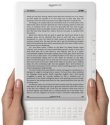 Amazon Kindle DX — May 6, 2009 — This larger version of Amazon's Linux-based Kindle e-book reader offers a 9.7-inch screen and native PDF support. The “Kindle DX” sports a thin (1/3-inch) profile, 4GB of storage, and a 1200 x 824 display that rotates from portrait to landscape modes.
Amazon Kindle DX — May 6, 2009 — This larger version of Amazon's Linux-based Kindle e-book reader offers a 9.7-inch screen and native PDF support. The “Kindle DX” sports a thin (1/3-inch) profile, 4GB of storage, and a 1200 x 824 display that rotates from portrait to landscape modes.
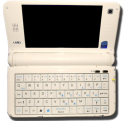 UMID Mbook — Apr. 30, 2009 — UMID's MID-like ultra-mobile PC (UMPC) runs Linux and is aimed at the Korean market. The UMID Mbook is equipped with an Intel Atom processor, a 4.8-inch, 1024 x 600 touchscreen, WiFi, Bluetooth, 1.3-megapixel camera, and a HSDPA 3G cellular modem.
UMID Mbook — Apr. 30, 2009 — UMID's MID-like ultra-mobile PC (UMPC) runs Linux and is aimed at the Korean market. The UMID Mbook is equipped with an Intel Atom processor, a 4.8-inch, 1024 x 600 touchscreen, WiFi, Bluetooth, 1.3-megapixel camera, and a HSDPA 3G cellular modem.
 Interead Cool-er — May 29, 2009 — This Linux-based e-book reader from U.K. startup Interead is claimed to be about 40 percent lighter than an Amazon Kindle 2, and over $100 cheaper. The “Cool-er” is equipped with a 400MHz ARM9 Samsung processor and a six-inch E-Ink Vizplex display.
Interead Cool-er — May 29, 2009 — This Linux-based e-book reader from U.K. startup Interead is claimed to be about 40 percent lighter than an Amazon Kindle 2, and over $100 cheaper. The “Cool-er” is equipped with a 400MHz ARM9 Samsung processor and a six-inch E-Ink Vizplex display.
 DLI 8400 — May 26, 2009 — Data Ltd's ruggedized UMPC (ultra-mobile PC) is claimed to survive multiple four-foot drops onto concrete. The Linux-compatible “DLI 8400” uses a 1.6GHz Atom processor, has hard disk or SSD (solid state disk) storage, and operates for nine hours via two hot-swappable batteries.
DLI 8400 — May 26, 2009 — Data Ltd's ruggedized UMPC (ultra-mobile PC) is claimed to survive multiple four-foot drops onto concrete. The Linux-compatible “DLI 8400” uses a 1.6GHz Atom processor, has hard disk or SSD (solid state disk) storage, and operates for nine hours via two hot-swappable batteries.
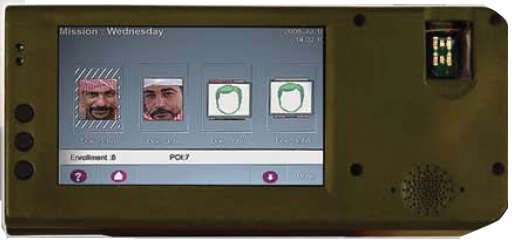 Amrel HBS-2 — May 8, 2009 — Amrel's MID-like handheld biometric computer scans faces, fingers, and iris patterns and checks them in real time. The Linux-compatible “HBS-2” runs on a 1.6GHz Atom processor, has a five-inch touchscreen, includes three cameras and built-in flash, and has a fingerprint scanner.
Amrel HBS-2 — May 8, 2009 — Amrel's MID-like handheld biometric computer scans faces, fingers, and iris patterns and checks them in real time. The Linux-compatible “HBS-2” runs on a 1.6GHz Atom processor, has a five-inch touchscreen, includes three cameras and built-in flash, and has a fingerprint scanner.
 SmartDevices SmartQ 5 and SmartQ 7 — May 8, 2009 — SmartDevices' ARM11-based mobile Internet device (MID) and larger 7-inch screen tablet device run Ubuntu Linux. Both the SmartQ 5 MID and SmartQ 7 (pictured) run off a Samsung S3C6410 system-on-chip clocked to 677MHz, and offer WiFi and Bluetooth.
SmartDevices SmartQ 5 and SmartQ 7 — May 8, 2009 — SmartDevices' ARM11-based mobile Internet device (MID) and larger 7-inch screen tablet device run Ubuntu Linux. Both the SmartQ 5 MID and SmartQ 7 (pictured) run off a Samsung S3C6410 system-on-chip clocked to 677MHz, and offer WiFi and Bluetooth.
 Amazon Kindle DX — May 6, 2009 — This larger version of Amazon's Linux-based Kindle e-book reader offers a 9.7-inch screen and native PDF support. The “Kindle DX” sports a thin (1/3-inch) profile, 4GB of storage, and a 1200 x 824 display that rotates from portrait to landscape modes.
Amazon Kindle DX — May 6, 2009 — This larger version of Amazon's Linux-based Kindle e-book reader offers a 9.7-inch screen and native PDF support. The “Kindle DX” sports a thin (1/3-inch) profile, 4GB of storage, and a 1200 x 824 display that rotates from portrait to landscape modes.
 UMID Mbook — Apr. 30, 2009 — UMID's MID-like ultra-mobile PC (UMPC) runs Linux and is aimed at the Korean market. The UMID Mbook is equipped with an Intel Atom processor, a 4.8-inch, 1024 x 600 touchscreen, WiFi, Bluetooth, 1.3-megapixel camera, and a HSDPA 3G cellular modem.
UMID Mbook — Apr. 30, 2009 — UMID's MID-like ultra-mobile PC (UMPC) runs Linux and is aimed at the Korean market. The UMID Mbook is equipped with an Intel Atom processor, a 4.8-inch, 1024 x 600 touchscreen, WiFi, Bluetooth, 1.3-megapixel camera, and a HSDPA 3G cellular modem.
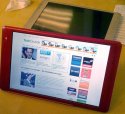 TechCrunch CrunchPad — Apr. 10, 2009 — TechCrunch's WiFi-enabled, open-source tablet PC device runs on an Intel Atom processor. Equipped with 1GB RAM and 4GB flash, the CrunchPad provides a 12-inch, 1024 x 768 touchscreen, a camera, Ethernet and USB ports, speaker and mic jacks, and accelerometers.
TechCrunch CrunchPad — Apr. 10, 2009 — TechCrunch's WiFi-enabled, open-source tablet PC device runs on an Intel Atom processor. Equipped with 1GB RAM and 4GB flash, the CrunchPad provides a 12-inch, 1024 x 768 touchscreen, a camera, Ethernet and USB ports, speaker and mic jacks, and accelerometers.
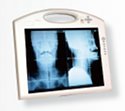 Arbor M1255 — Mar. 13, 2009 — Arbor's Linux-compatible tablet PC targets medical applications, with a sealed, easily sanitized case. The “M1255” has a 12.1-inch touchscreen display, Atom N270 processor, 60GB hard disk drive, 802.11b/g/n WiFi, two-megapixel camera, barcode scanner, fingerprint reader, and an RFID reader.
Arbor M1255 — Mar. 13, 2009 — Arbor's Linux-compatible tablet PC targets medical applications, with a sealed, easily sanitized case. The “M1255” has a 12.1-inch touchscreen display, Atom N270 processor, 60GB hard disk drive, 802.11b/g/n WiFi, two-megapixel camera, barcode scanner, fingerprint reader, and an RFID reader.
 Txtr Reader — Mar. 10, 2009 — This eBook reader from Berlin-based start-up Txtr boasts an “open architecture” Linux development platform. Like Amazon's Kindle 2, the Txtr Reader offers a 532MHz processor, a 3G connection, a second-generation E Ink grayscale display, and tie-ins to online services.
Txtr Reader — Mar. 10, 2009 — This eBook reader from Berlin-based start-up Txtr boasts an “open architecture” Linux development platform. Like Amazon's Kindle 2, the Txtr Reader offers a 532MHz processor, a 3G connection, a second-generation E Ink grayscale display, and tie-ins to online services.
 Amazon.com Kindle 2 — Mar. 06, 2009 — This upgraded version of Amazon.com's best-selling eBook reader adds longer battery life, slimmer design, more internal storage, and with the help of a 532MHz Freescale i.MX31 SoC, more processing power. The Kindle 2 also moves to a second-generation E Ink screen with four times more grayscale shades, but it lacks the Kindle's SD slot.
Amazon.com Kindle 2 — Mar. 06, 2009 — This upgraded version of Amazon.com's best-selling eBook reader adds longer battery life, slimmer design, more internal storage, and with the help of a 532MHz Freescale i.MX31 SoC, more processing power. The Kindle 2 also moves to a second-generation E Ink screen with four times more grayscale shades, but it lacks the Kindle's SD slot.
 TechSol TPC-35B Medallion Touch Panel Computer — Jan. 28, 2009 — A customizable, Linux-ready touch-panel computer aimed at human machine interface (HMI) applications, the TPC-35B Medallion Touch Panel Computer is built on a Samsung s3c2410a ARM9 system-on-chip (SoC), and equipped with a 3.5-inch QVGA touchscreen and dual Ethernet ports.
TechSol TPC-35B Medallion Touch Panel Computer — Jan. 28, 2009 — A customizable, Linux-ready touch-panel computer aimed at human machine interface (HMI) applications, the TPC-35B Medallion Touch Panel Computer is built on a Samsung s3c2410a ARM9 system-on-chip (SoC), and equipped with a 3.5-inch QVGA touchscreen and dual Ethernet ports.
 USI MID-160 — Oct. 21, 2008 — USI's super-thin, Linux-based mobile Internet device (MID) offers GPS, Bluetooth, WiFi, and either HSPA or WiMAX. The Intel Atom-equipped USI MID-160 sports a 5-inch 800×480 touchscreen, but lacks a keyboard, helping it keep a 0.6-inch profile.
USI MID-160 — Oct. 21, 2008 — USI's super-thin, Linux-based mobile Internet device (MID) offers GPS, Bluetooth, WiFi, and either HSPA or WiMAX. The Intel Atom-equipped USI MID-160 sports a 5-inch 800×480 touchscreen, but lacks a keyboard, helping it keep a 0.6-inch profile.
 BenQ S6 MID — Oct. 06, 2008 — BenQ's MID runs Red Flag's Midinux Linux distro, and is being sold by Italian mobile carrier TIM. The BenQ S6 Mobile Internet Device (MID) is equipped with an 800MHz Intel Atom processor, and offers a 4.8-inch WVGA touchscreen, WiFi, HSDPA, Bluetooth, USB, and accelerometers.
BenQ S6 MID — Oct. 06, 2008 — BenQ's MID runs Red Flag's Midinux Linux distro, and is being sold by Italian mobile carrier TIM. The BenQ S6 Mobile Internet Device (MID) is equipped with an 800MHz Intel Atom processor, and offers a 4.8-inch WVGA touchscreen, WiFi, HSDPA, Bluetooth, USB, and accelerometers.
 Aigo P8860D — Sep. 30, 2008 — Aigo's Intel Atom-based MID is based on an almost identical “M528” MID from Gigabyte. The Linux-based Aigo P8860D features an 800MHz Z500 Atom, 512MB RAM, a 4.8-inch touchscreen, and WiFi, HSDPA, Bluetooth, and GPS.
Aigo P8860D — Sep. 30, 2008 — Aigo's Intel Atom-based MID is based on an almost identical “M528” MID from Gigabyte. The Linux-based Aigo P8860D features an 800MHz Z500 Atom, 512MB RAM, a 4.8-inch touchscreen, and WiFi, HSDPA, Bluetooth, and GPS.
 Hanlin eReader V3 — Sep. 16, 2008 — Manufactured by China-based Jinke Electronics, the Hanlin eReader V3 is an electronic book reader that runs Linux. Based on a 200MHz ARM9 processor, the Hanlin eReader V3 offers a six-inch 800 x 600 display that uses E Ink's power-sipping EPD (electronic paper display) module.
Hanlin eReader V3 — Sep. 16, 2008 — Manufactured by China-based Jinke Electronics, the Hanlin eReader V3 is an electronic book reader that runs Linux. Based on a 200MHz ARM9 processor, the Hanlin eReader V3 offers a six-inch 800 x 600 display that uses E Ink's power-sipping EPD (electronic paper display) module.
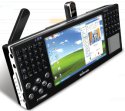 WiBrain i1, B1LE, and B1LH — Aug. 26, 2008 — Korea-based WiBrain offers several mobile Internet devices (MIDs) based on Ubuntu Linux, all equipped with multiple input technologies, hard-drive or solid-state storage options, and 4.8-inch, 1024 x 600-resolution touchscreen. The B1LE and B1LH are built around 1.2GHz Via C7M processors, and the newer “i1” MID (shown) uses an Intel Atom, and features a HSDPA (high-speed downlink packet access) cellular modem.
WiBrain i1, B1LE, and B1LH — Aug. 26, 2008 — Korea-based WiBrain offers several mobile Internet devices (MIDs) based on Ubuntu Linux, all equipped with multiple input technologies, hard-drive or solid-state storage options, and 4.8-inch, 1024 x 600-resolution touchscreen. The B1LE and B1LH are built around 1.2GHz Via C7M processors, and the newer “i1” MID (shown) uses an Intel Atom, and features a HSDPA (high-speed downlink packet access) cellular modem.
![]() Unicon Hermes/Pegasus — Aug. 08, 2008 — This MID-capable “system-on-display” reference design from Unicon Systems won the LinuxWorld 2008 “Best Mobility solution” Product Excellence Award. The Hermes (pictured) runs on a Samsung 533MHz dual-core ARM11 processor, sports a 4.3-inch touchscreen, and can be bought as a larger-format Linux-based reference platform called Pegasus.
Unicon Hermes/Pegasus — Aug. 08, 2008 — This MID-capable “system-on-display” reference design from Unicon Systems won the LinuxWorld 2008 “Best Mobility solution” Product Excellence Award. The Hermes (pictured) runs on a Samsung 533MHz dual-core ARM11 processor, sports a 4.3-inch touchscreen, and can be bought as a larger-format Linux-based reference platform called Pegasus.
 Arbor Gladius G0710 — Aug. 05, 2008 — Arbor Technology's seven-inch tablet PC uses Intel Atom processors and runs Linux. The ruggedized Gladius G0710 has a touchscreen display, gigabit Ethernet and 802.11b/g networking, a two megapixel camera, and is said to be able to survive multiple four-foot drops.
Arbor Gladius G0710 — Aug. 05, 2008 — Arbor Technology's seven-inch tablet PC uses Intel Atom processors and runs Linux. The ruggedized Gladius G0710 has a touchscreen display, gigabit Ethernet and 802.11b/g networking, a two megapixel camera, and is said to be able to survive multiple four-foot drops.
 Noah NC200 — Jul. 14, 2008 — Chinese educational device vendor Noah Education Holdings is using Trolltech's Qt for Embedded Linux application framework in its latest Linux-based educational devices. Its latest Linux-based Chinese language course-ware device is the Noah NC200, which runs on an undisclosed 400MHz processor, and offers 1GB of memory, up to 4GB of Micro-SD-based storage, and a 3-inch, 320×240 touchscreen.
Noah NC200 — Jul. 14, 2008 — Chinese educational device vendor Noah Education Holdings is using Trolltech's Qt for Embedded Linux application framework in its latest Linux-based educational devices. Its latest Linux-based Chinese language course-ware device is the Noah NC200, which runs on an undisclosed 400MHz processor, and offers 1GB of memory, up to 4GB of Micro-SD-based storage, and a 3-inch, 320×240 touchscreen.
 Nexcom MTC2100, MTC200-MD, and MRC2100 — Apr. 25, 2008 — These tablet computers target logistics, health care, and vehicle applications. They use Intel's Atom processor, and feature 8.4-inch sunlight-readable displays, fingerprint readers, Infineon TPMs (trusted platform modules), and battery life up to 8 hours, Nexcom claims.
Nexcom MTC2100, MTC200-MD, and MRC2100 — Apr. 25, 2008 — These tablet computers target logistics, health care, and vehicle applications. They use Intel's Atom processor, and feature 8.4-inch sunlight-readable displays, fingerprint readers, Infineon TPMs (trusted platform modules), and battery life up to 8 hours, Nexcom claims.
 Sophia Systems Peartree MID — Apr. 04, 2008 — A MID (mobile internet device) development platform using Intel's new Centrino Atom chipset, the “Peartree” features a five-inch touchscreen display, TV, camera, 4GB of solid-state storage, 802.11b/g and Bluetooth, plus an extension unit with GPS and a 40GB hard drive, Sophia says.
Sophia Systems Peartree MID — Apr. 04, 2008 — A MID (mobile internet device) development platform using Intel's new Centrino Atom chipset, the “Peartree” features a five-inch touchscreen display, TV, camera, 4GB of solid-state storage, 802.11b/g and Bluetooth, plus an extension unit with GPS and a 40GB hard drive, Sophia says.
 Nokia N810 WiMAX Edition — Apr. 02, 2008 — Nokia's WiMAX Edition version of its Linux-based N810 Internet Tablet is identical to the N810 except for the new WiMAX radio, which is optimized for Sprint's Xohm WiMAX broadband wireless service. In addition, it offers a pre-installed version of Nokia's new Linux-based “Tablet OS2008” operating system (OS).
Nokia N810 WiMAX Edition — Apr. 02, 2008 — Nokia's WiMAX Edition version of its Linux-based N810 Internet Tablet is identical to the N810 except for the new WiMAX radio, which is optimized for Sprint's Xohm WiMAX broadband wireless service. In addition, it offers a pre-installed version of Nokia's new Linux-based “Tablet OS2008” operating system (OS).
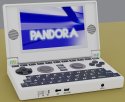 OpenPandora Pandora — Jan. 29, 2008 — OpenPandora.org's Linux-based handheld gaming device offers WiFi, USB, and a 4.3-inch, 800×480 touchscreen. The Pandora prototype measures 5.5 x 3.3 x 1.1 inches and runs Linux on a next-generation ARM SoC with integrated OpenGL 2.0 compliant graphics processor.
OpenPandora Pandora — Jan. 29, 2008 — OpenPandora.org's Linux-based handheld gaming device offers WiFi, USB, and a 4.3-inch, 800×480 touchscreen. The Pandora prototype measures 5.5 x 3.3 x 1.1 inches and runs Linux on a next-generation ARM SoC with integrated OpenGL 2.0 compliant graphics processor.
 Polymer Vision Readius — Jan. 24, 2008 — Similar to the Amazon Kindle, this e-reader device from Philips spinoff Polymer Vision offers a flexible, rollup display that can be compressed to a 4.5 x 2.5 x 0.8-inch form factor. The “Readius” is said to offer up to 30 hours of reading without a battery charge.
Polymer Vision Readius — Jan. 24, 2008 — Similar to the Amazon Kindle, this e-reader device from Philips spinoff Polymer Vision offers a flexible, rollup display that can be compressed to a 4.5 x 2.5 x 0.8-inch form factor. The “Readius” is said to offer up to 30 hours of reading without a battery charge.
 Via MTube — Jan. 14, 2008 — The MTube is a proof-of-concept design for an ultra-small TV/Internet tablet designed by Via and a Taiwanese government-sponsored R&D organization. The 3.3 x 3.3 x 0.8-inch, WiFi-enabled device runs Ubuntu Linux on a 1GHz x86-compatible processor, offers DVB-T playback and record, and is positioned as the “world's smallest x86 PC.”
Via MTube — Jan. 14, 2008 — The MTube is a proof-of-concept design for an ultra-small TV/Internet tablet designed by Via and a Taiwanese government-sponsored R&D organization. The 3.3 x 3.3 x 0.8-inch, WiFi-enabled device runs Ubuntu Linux on a 1GHz x86-compatible processor, offers DVB-T playback and record, and is positioned as the “world's smallest x86 PC.”
 ETRI Mobile Convergence Communicator — Jan. 11, 2008 — The Mobile Convergence Communicator (MCC) is a prototype MID designed by a non-profit Korean government-funded research organization called Electronics and Telecommunications Research Institute's (ETRI). The MCC runs ETRI's Qplus Linux distro on a 624MHz Marvell PXA270, and offers WiFi, 3.5G cellular networking, Bluetooth, and digital TV reception.
ETRI Mobile Convergence Communicator — Jan. 11, 2008 — The Mobile Convergence Communicator (MCC) is a prototype MID designed by a non-profit Korean government-funded research organization called Electronics and Telecommunications Research Institute's (ETRI). The MCC runs ETRI's Qplus Linux distro on a 624MHz Marvell PXA270, and offers WiFi, 3.5G cellular networking, Bluetooth, and digital TV reception.
 THTF LimePC — Jan. 07, 2008 — The LimePC is a prototype built by Beijing-based Tsinghua Tongfang (THTF) and designed by Korea-based LimePC for a line of ultra-mini PCs (UMPCs), one of which is said to be the size of a pack of playing cards. Based on one or two Freescale MPC5121e system-on-chips (SoCs), the LimePC offers USB 2.0, WiFi, and Bluetooth 2.1.
THTF LimePC — Jan. 07, 2008 — The LimePC is a prototype built by Beijing-based Tsinghua Tongfang (THTF) and designed by Korea-based LimePC for a line of ultra-mini PCs (UMPCs), one of which is said to be the size of a pack of playing cards. Based on one or two Freescale MPC5121e system-on-chips (SoCs), the LimePC offers USB 2.0, WiFi, and Bluetooth 2.1.
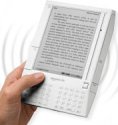 Amazon Kindle — Nov. 21, 2007 — Amazon's “Kindle” electronic book reader runs a Linux distro and connects to Amazon's electronic bookstore via a built-in EVDO cellular data modem. The Kindle boasts a claimed 30 hours of battery life, thanks in part to a power-saving E-ink EPD (electro-phlorescent, or “electronic paper” display) and “fpow” power-saving infrastructure.
Amazon Kindle — Nov. 21, 2007 — Amazon's “Kindle” electronic book reader runs a Linux distro and connects to Amazon's electronic bookstore via a built-in EVDO cellular data modem. The Kindle boasts a claimed 30 hours of battery life, thanks in part to a power-saving E-ink EPD (electro-phlorescent, or “electronic paper” display) and “fpow” power-saving infrastructure.
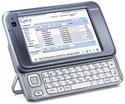 Nokia N810 — Oct. 17, 2007 — Nokia's upgrade to its popular, Linux-based Internet Tablet is smaller, heavier, and faster than the older N800, with new features that include a slide-out hardware QWERTY thumb keyboard. Additional new features for the N810 include a GPS receiver, FM transmitter (for in-car listening), and a light-sensing screen dimmer.
Nokia N810 — Oct. 17, 2007 — Nokia's upgrade to its popular, Linux-based Internet Tablet is smaller, heavier, and faster than the older N800, with new features that include a slide-out hardware QWERTY thumb keyboard. Additional new features for the N810 include a GPS receiver, FM transmitter (for in-car listening), and a light-sensing screen dimmer.
—
–>
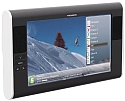 Thomson WiFi Tablet — Sep. 11, 2007 — Thomson's “WiFi Tablet” delivers IP-TV wirelessly throughout the home, eliminating the need to run cable and install extra set-top boxes. Based on a 202.5MHz Texas Instruments DaVinci TMS320DM6441, the tablet offers an 8-inch WVGA (800×480) pixel LCD touchscreen, stereo speakers, wireless music playback, and digital photo-frame capability.
Thomson WiFi Tablet — Sep. 11, 2007 — Thomson's “WiFi Tablet” delivers IP-TV wirelessly throughout the home, eliminating the need to run cable and install extra set-top boxes. Based on a 202.5MHz Texas Instruments DaVinci TMS320DM6441, the tablet offers an 8-inch WVGA (800×480) pixel LCD touchscreen, stereo speakers, wireless music playback, and digital photo-frame capability.
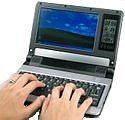 Via NanoBook Ultra Mobile Device — Jun. 05, 2007 — This reference design from Via Technologies is a UMPC-like device with a full QWERTY keyboard and “sub-notebook” style design. The NanoBook Ultra Mobile Device (UMD) is equipped with a 1.2GHz Via C7-M ULV, 1GB of DDR2, a 7-inch WVGA touchscreen, Wifi, Bluetooth, Ethernet, DVI out, and dual USB ports.
Via NanoBook Ultra Mobile Device — Jun. 05, 2007 — This reference design from Via Technologies is a UMPC-like device with a full QWERTY keyboard and “sub-notebook” style design. The NanoBook Ultra Mobile Device (UMD) is equipped with a 1.2GHz Via C7-M ULV, 1GB of DDR2, a 7-inch WVGA touchscreen, Wifi, Bluetooth, Ethernet, DVI out, and dual USB ports.
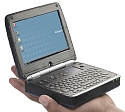 FlipStart — Apr. 26, 2007 — This tiny Windows-based clamshell from Paul Allen-funded FlipStart does not ship with Linux, but the company claims it runs Linux with no problem. The FlipStart 1.0 squeezes a full PC — including a 1.1GHz processor, 30GB hard drive, display, keyboard, and wireless communications — into a 5.9 x 4.5 x 1.4-inch package.
FlipStart — Apr. 26, 2007 — This tiny Windows-based clamshell from Paul Allen-funded FlipStart does not ship with Linux, but the company claims it runs Linux with no problem. The FlipStart 1.0 squeezes a full PC — including a 1.1GHz processor, 30GB hard drive, display, keyboard, and wireless communications — into a 5.9 x 4.5 x 1.4-inch package.
 TabletKiosk eo TufTab v7112XT — Apr. 11, 2007 — TabletKiosk's “eo TufTab v7112XT” is a ruggedized tablet with a 1.2GHz Via C7-M processor, and Linux pre-installed on its 40GB hard drive. Additional TufTab features include a 1.3MPix CMOS camera with claimed 30fps video capture, a biometric fingerprint reader, several expansion slots, and a full gig of RAM.
TabletKiosk eo TufTab v7112XT — Apr. 11, 2007 — TabletKiosk's “eo TufTab v7112XT” is a ruggedized tablet with a 1.2GHz Via C7-M processor, and Linux pre-installed on its 40GB hard drive. Additional TufTab features include a 1.3MPix CMOS camera with claimed 30fps video capture, a biometric fingerprint reader, several expansion slots, and a full gig of RAM.
 Beijing Peace East Technology Development Company H9 — Feb. 05, 2007 — The Beijing Peace East Technology Development Company's “H9” reference design offers an ARM-based “UMPC” (ultra-mobile PC) platform that features a high-quality 7-inch LCD display. The H9 is equipped with a GPS receiver, 128MB of RAM, and a 520MHz Marvell PXA270 processor.
Beijing Peace East Technology Development Company H9 — Feb. 05, 2007 — The Beijing Peace East Technology Development Company's “H9” reference design offers an ARM-based “UMPC” (ultra-mobile PC) platform that features a high-quality 7-inch LCD display. The H9 is equipped with a GPS receiver, 128MB of RAM, and a 520MHz Marvell PXA270 processor.
 Nokia N800 Internet Tablet — Jan. 6, 2007 — The Linux-based N800 retains the same small web tablet form-factor as Nokia's earlier 770 tablet, while adding a webcam and significantly increased computing horsepower, memory, and storage capabilities. As with the 770, key features include a WVGA (800×480) screen, built-in WiFi and Bluetooth, and a full Opera browser. VoIP support is now standard, and the device's multimedia features have been enhanced.
Nokia N800 Internet Tablet — Jan. 6, 2007 — The Linux-based N800 retains the same small web tablet form-factor as Nokia's earlier 770 tablet, while adding a webcam and significantly increased computing horsepower, memory, and storage capabilities. As with the 770, key features include a WVGA (800×480) screen, built-in WiFi and Bluetooth, and a full Opera browser. VoIP support is now standard, and the device's multimedia features have been enhanced.
 Pepper Computer Pepper Pad 3 — Dec. 1, 2006 — A smaller, lighter, faster, less expensive version of the Linux-based Pepper Pad, the third-generation Pepper Pad 3 has moved to an x86-compatible AMD Geode processor, and is said to offer better performance, battery life, and other improvements.
Pepper Computer Pepper Pad 3 — Dec. 1, 2006 — A smaller, lighter, faster, less expensive version of the Linux-based Pepper Pad, the third-generation Pepper Pad 3 has moved to an x86-compatible AMD Geode processor, and is said to offer better performance, battery life, and other improvements.
 eRead Star eBook STK-101 — Dec. 1, 2006 — A Linux-based electronic book reader featuring an electrophoretic (aka electronic paper) display (EPD), the low-power, thin, light-weight Star eBook STK-101 can be used to read as many as 60 books on a single charge, the company claims.
eRead Star eBook STK-101 — Dec. 1, 2006 — A Linux-based electronic book reader featuring an electrophoretic (aka electronic paper) display (EPD), the low-power, thin, light-weight Star eBook STK-101 can be used to read as many as 60 books on a single charge, the company claims.
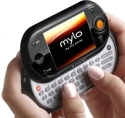 Sony MYLO (“My Life Online”) — Nov. 1, 2006 — A Linux-based, WiFi-equipped multifunction handheld based on an ARM9-based i.MX21 SoC (system-on-chip). It features a built-in Qwerty thumb keyboard and Skype voice messaging client.
Sony MYLO (“My Life Online”) — Nov. 1, 2006 — A Linux-based, WiFi-equipped multifunction handheld based on an ARM9-based i.MX21 SoC (system-on-chip). It features a built-in Qwerty thumb keyboard and Skype voice messaging client.
 Kontron [email protected] Micro Client — Sep. 1, 2006 — A thin-client HMI (human-machine interface) subsystem, the [email protected] Micro Client is based on Kontron's ETX-format SBCs (single-board computers), and integrates a 15-inch touchscreen LCD. It boots Linux from a CompactFlash card.
Kontron [email protected] Micro Client — Sep. 1, 2006 — A thin-client HMI (human-machine interface) subsystem, the [email protected] Micro Client is based on Kontron's ETX-format SBCs (single-board computers), and integrates a 15-inch touchscreen LCD. It boots Linux from a CompactFlash card.
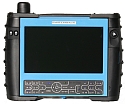 Black Diamond SwitchBack — Sep. 1, 2006 — Claimed to be the world's first rugged UMPC (ultra-mobile PC), the SwitchBack offers functional features similar to those of consumer UMPCs, but is designed to meet the environmental and expansion requirements of applications in field service, warehousing, and the military.
Black Diamond SwitchBack — Sep. 1, 2006 — Claimed to be the world's first rugged UMPC (ultra-mobile PC), the SwitchBack offers functional features similar to those of consumer UMPCs, but is designed to meet the environmental and expansion requirements of applications in field service, warehousing, and the military.
 iRex Iliad eBook Reader — Aug. 1, 2006 — An electronic paper display (EPD) helps save power in this portable, Linux-based reading device, available now for personal and business-to-business applications. The iLiad's paper display “reads just like paper, and is perceived as such by the human eye,” according to the company.
iRex Iliad eBook Reader — Aug. 1, 2006 — An electronic paper display (EPD) helps save power in this portable, Linux-based reading device, available now for personal and business-to-business applications. The iLiad's paper display “reads just like paper, and is perceived as such by the human eye,” according to the company.
 One Laptop per Child (OLPC) notebook — Aug. 1, 2006 — A small Linux-powered PC meant for school children in developing nations, the “OLPC” boots Linux from flash-based storage. The countries of Nigeria, Brazil, Argentina, and Thailand have each committed to buy 1 million Linux laptops through the U.S.-based program.
One Laptop per Child (OLPC) notebook — Aug. 1, 2006 — A small Linux-powered PC meant for school children in developing nations, the “OLPC” boots Linux from flash-based storage. The countries of Nigeria, Brazil, Argentina, and Thailand have each committed to buy 1 million Linux laptops through the U.S.-based program.
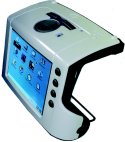 Eurotech WWPC (wrist-worn PC) — Mar. 1, 2006 — A wrist-worn wearable computer that runs embedded Linux or Windows CE, Eurotech's WWPC (“wrist-worn PC”) offers standard PC interfaces, along with several innovative wearable-specific features. It targets emergency rescue, security, healthcare, maintenance, logistics, and “many other” applications.
Eurotech WWPC (wrist-worn PC) — Mar. 1, 2006 — A wrist-worn wearable computer that runs embedded Linux or Windows CE, Eurotech's WWPC (“wrist-worn PC”) offers standard PC interfaces, along with several innovative wearable-specific features. It targets emergency rescue, security, healthcare, maintenance, logistics, and “many other” applications.
 FIC AquaPAD+ — Jul. 26, 2005 — A full-function webpad powerful enough “to truly marshal the possibilities of a wireless world,” according to the company, the AquaPAD+ is optionally available with embedded Linux, and boasts built-in 802.11g, IrDA, PCMCIA, dual-USB, and an optional Bluetooth USB dongle.
FIC AquaPAD+ — Jul. 26, 2005 — A full-function webpad powerful enough “to truly marshal the possibilities of a wireless world,” according to the company, the AquaPAD+ is optionally available with embedded Linux, and boasts built-in 802.11g, IrDA, PCMCIA, dual-USB, and an optional Bluetooth USB dongle.
 Nokia 770 Internet Tablet — May. 25, 2005 — A PDA-sized Internet tablet designed for email and web-browsing, the 770 boasts a large, WVGA (800×480) screen, plus built-in WiFi and Bluetooth wireless. In addition to a full Opera browser, its software suite includes an email client, Internet radio, news reader, media players, image viewers, and more.
Nokia 770 Internet Tablet — May. 25, 2005 — A PDA-sized Internet tablet designed for email and web-browsing, the 770 boasts a large, WVGA (800×480) screen, plus built-in WiFi and Bluetooth wireless. In addition to a full Opera browser, its software suite includes an email client, Internet radio, news reader, media players, image viewers, and more.
 Pepper Computer Pepper Pad 2 — May. 19, 2005 — A new $800 Linux-based wireless webpad will be available direct to consumers next year from Pepper Computer. The “Pepper Pad 2” provides basic digital home computing capabilities, including web browsing, email, IM, writing/editing, games, and multimedia functions. It will also be marketed through broadband providers.
Pepper Computer Pepper Pad 2 — May. 19, 2005 — A new $800 Linux-based wireless webpad will be available direct to consumers next year from Pepper Computer. The “Pepper Pad 2” provides basic digital home computing capabilities, including web browsing, email, IM, writing/editing, games, and multimedia functions. It will also be marketed through broadband providers.
 Mobilis “Mobilis” and “SofCore” — May. 13, 2005 — Simputer maker Mobilis is readying a new family of low-cost Linux-based PCs for the Indian market. Mobilis's “Mobilis” and “SofCore” systems will ship in Q3, 2005, offering a surprising range of functionality at prices appropriate for India's developing industrial economy, the company says.
Mobilis “Mobilis” and “SofCore” — May. 13, 2005 — Simputer maker Mobilis is readying a new family of low-cost Linux-based PCs for the Indian market. Mobilis's “Mobilis” and “SofCore” systems will ship in Q3, 2005, offering a surprising range of functionality at prices appropriate for India's developing industrial economy, the company says.
 Xybernaut Atiga T — Aug. 30, 2004 — Xybernaut is offering Linux-based implementations for one of its mobile computing devices. The Atiga T is based on a Transmeta Crusoe processor, and targets enterprises and facilities with mobile workers. Customer demand and Linux's flexibility inspired the Linux port, the company says.
Xybernaut Atiga T — Aug. 30, 2004 — Xybernaut is offering Linux-based implementations for one of its mobile computing devices. The Atiga T is based on a Transmeta Crusoe processor, and targets enterprises and facilities with mobile workers. Customer demand and Linux's flexibility inspired the Linux port, the company says.
 Pepper Computer Pepper Pad — Jan. 5, 2004 — The Pepper Pad is meant to be “the ultimate platform” for the Pepper Keeper Software Suite, which includes IM, browsing, photo album, media collection, and other sharing and collaboration tools. Based on MontaVista Linux.
Pepper Computer Pepper Pad — Jan. 5, 2004 — The Pepper Pad is meant to be “the ultimate platform” for the Pepper Keeper Software Suite, which includes IM, browsing, photo album, media collection, and other sharing and collaboration tools. Based on MontaVista Linux.
 Antelope Technologies “Mobile Computing Core” — Sep. 25, 2003 — This bare-bones computer module measures 3 x 5 x 1 in., weighs approximately 9.1 ounces, and packs the functions of a full PC based on a 1GHz processor running Linuxminus the power supply, display, and I/O connectors. Components not included in the MCC are supplied via discrete “shells” which transform the MCC into various computer stylessuch as handheld, desktop, or automotiveenabling a single MCC computer to convert among these differing uses in a few seconds, without requiring rebooting or synching, and eliminating the need for redundant operating system and application software licenses.
Antelope Technologies “Mobile Computing Core” — Sep. 25, 2003 — This bare-bones computer module measures 3 x 5 x 1 in., weighs approximately 9.1 ounces, and packs the functions of a full PC based on a 1GHz processor running Linuxminus the power supply, display, and I/O connectors. Components not included in the MCC are supplied via discrete “shells” which transform the MCC into various computer stylessuch as handheld, desktop, or automotiveenabling a single MCC computer to convert among these differing uses in a few seconds, without requiring rebooting or synching, and eliminating the need for redundant operating system and application software licenses.
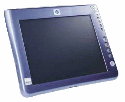 Hitachi VisionPlate wireless tablet — Feb. 18, 2003 — This device is a “true thin client” device that provides a graphic wireless interface to any network application, according to Hitachi. The device is based on a 400 MHz Transmeta Crusoe processor running Midori Linux, and has built-in 802.11b wireless networking.
Hitachi VisionPlate wireless tablet — Feb. 18, 2003 — This device is a “true thin client” device that provides a graphic wireless interface to any network application, according to Hitachi. The device is based on a 400 MHz Transmeta Crusoe processor running Midori Linux, and has built-in 802.11b wireless networking.
 Hitachi FLORA-ie 55mi — Jun. 6, 2002 — This wireless web pad with a 10.4-inch TFT LCD screen is based on a 400 MHz Transmeta Crusoe processor with 128 to 256 MB RAM, running Midori Linux. It has built-in Ethernet and 802.11b wireless, and also provides two USB ports plus both CompactFlash Type II and PC Card (PCMCIA) expansion slots. User input is via stylus (like a PDA) when roaming, or by means of an external keyboard/mouse when the device is inserted in its docking cradle.
Hitachi FLORA-ie 55mi — Jun. 6, 2002 — This wireless web pad with a 10.4-inch TFT LCD screen is based on a 400 MHz Transmeta Crusoe processor with 128 to 256 MB RAM, running Midori Linux. It has built-in Ethernet and 802.11b wireless, and also provides two USB ports plus both CompactFlash Type II and PC Card (PCMCIA) expansion slots. User input is via stylus (like a PDA) when roaming, or by means of an external keyboard/mouse when the device is inserted in its docking cradle.
 SonicBlue ProGear — Mar. 21, 2002 — A Linux-based wireless webpad information appliance targeted to vertical market segments. The device supports various rich media formats, includes a 10.4″ 1024×768 pixel (XGA) TFT display, and obtains user input via either virtual keyboard or handwriting recognition on its touchscreen.
SonicBlue ProGear — Mar. 21, 2002 — A Linux-based wireless webpad information appliance targeted to vertical market segments. The device supports various rich media formats, includes a 10.4″ 1024×768 pixel (XGA) TFT display, and obtains user input via either virtual keyboard or handwriting recognition on its touchscreen.
 FIC AquaPAD — Sep. 20, 2001 — This compact, hand-held webpad offers the functions of Internet access, games, multimedia audio/video, plus a full PDA-like PIM suite. The device based on a Transmeta Crusoe processor and supports a choice of two operating systems: Midori Linux; and Windows CE..
FIC AquaPAD — Sep. 20, 2001 — This compact, hand-held webpad offers the functions of Internet access, games, multimedia audio/video, plus a full PDA-like PIM suite. The device based on a Transmeta Crusoe processor and supports a choice of two operating systems: Midori Linux; and Windows CE..
 LG Digital iPAD — Mar. 23, 2001 — This wireless webpad from LG Electronics features an Integrated Web browser and Linux-based MP3 and MPEG4 players, and connects to the Internet using an 802.11lb wireless interface. The device runs the Linux 2.4 kernel and is powered by a 206Mhz Intel SA-1110 system-on-chip processor with 64B RAM memory. A PCMCIA allows adding Flash memory cards or peripheral interfaces.
LG Digital iPAD — Mar. 23, 2001 — This wireless webpad from LG Electronics features an Integrated Web browser and Linux-based MP3 and MPEG4 players, and connects to the Internet using an 802.11lb wireless interface. The device runs the Linux 2.4 kernel and is powered by a 206Mhz Intel SA-1110 system-on-chip processor with 64B RAM memory. A PCMCIA allows adding Flash memory cards or peripheral interfaces.
 Gateway Connected Touch Pad — Nov. 15, 2000 — Gateway has announced a “Connected Touch Pad” device for home users that will be brought to market in partnership with America Online. The device, which has a 10.4″ color LCD touch-screen display, is one of the first consumer products to be based on Transmeta's Crusoe processor. It runs Transmeta's port of Linux known as “Mobile Linux,” and uses XFree86 and a customized Gecko-based browser.
Gateway Connected Touch Pad — Nov. 15, 2000 — Gateway has announced a “Connected Touch Pad” device for home users that will be brought to market in partnership with America Online. The device, which has a 10.4″ color LCD touch-screen display, is one of the first consumer products to be based on Transmeta's Crusoe processor. It runs Transmeta's port of Linux known as “Mobile Linux,” and uses XFree86 and a customized Gecko-based browser.
 Screen Media FreePad — Aug. 28, 2000 — the FreePad is an easy-to-use full-featured webpad that provides a full set of communications and computing functions, including web browsing, email, telephone and answering machine functions, PDA functions, and Smartcard terminal functions. The device has a large (10.4″) LCD screen, touch input, built-in DECT wireless technology, and provides a USB interface for external (wired) expansion. The processor is a 166 MHz MediaGX and there is 32MB internal RAM memory plus a 16MB internal flash disk. The embedded operating system is Linux, the windowing system is Nano-X (from the Microwindows project), and the browser is from Opera.
Screen Media FreePad — Aug. 28, 2000 — the FreePad is an easy-to-use full-featured webpad that provides a full set of communications and computing functions, including web browsing, email, telephone and answering machine functions, PDA functions, and Smartcard terminal functions. The device has a large (10.4″) LCD screen, touch input, built-in DECT wireless technology, and provides a USB interface for external (wired) expansion. The processor is a 166 MHz MediaGX and there is 32MB internal RAM memory plus a 16MB internal flash disk. The embedded operating system is Linux, the windowing system is Nano-X (from the Microwindows project), and the browser is from Opera.
This article was originally published on LinuxDevices.com and has been donated to the open source community by QuinStreet Inc. Please visit LinuxToday.com for up-to-date news and articles about Linux and open source.